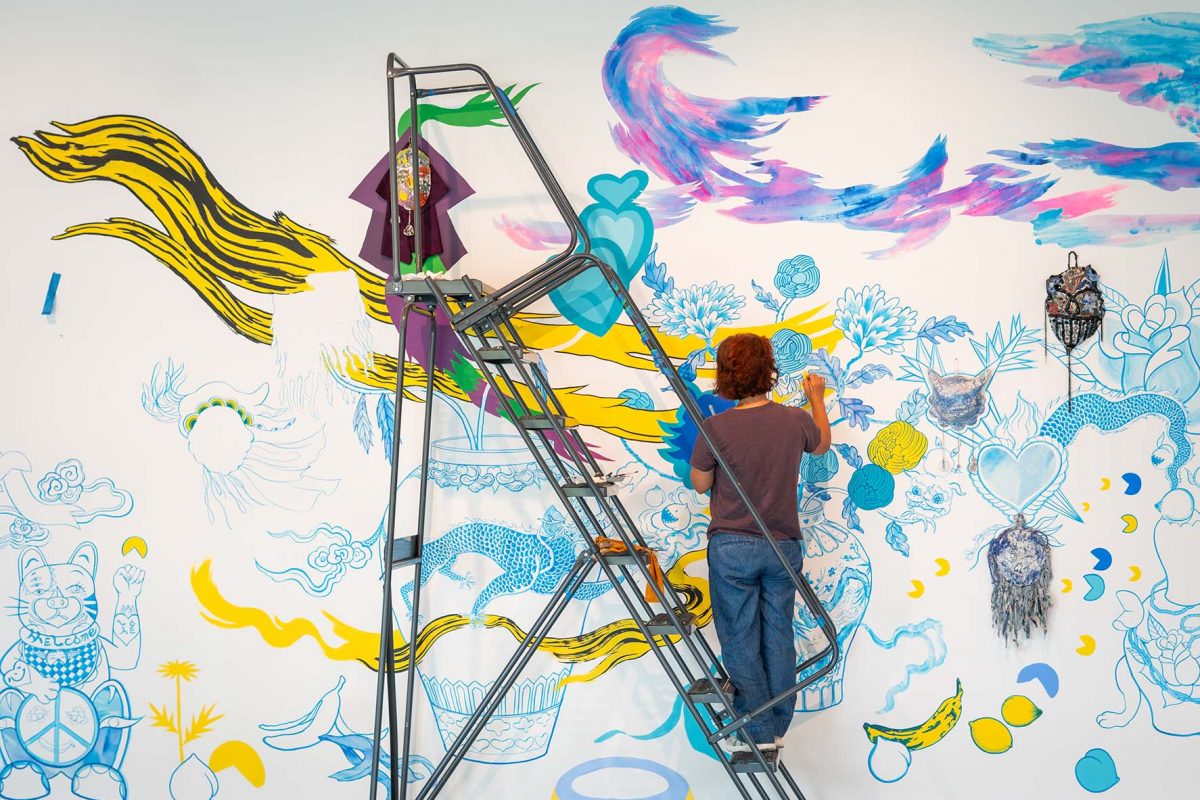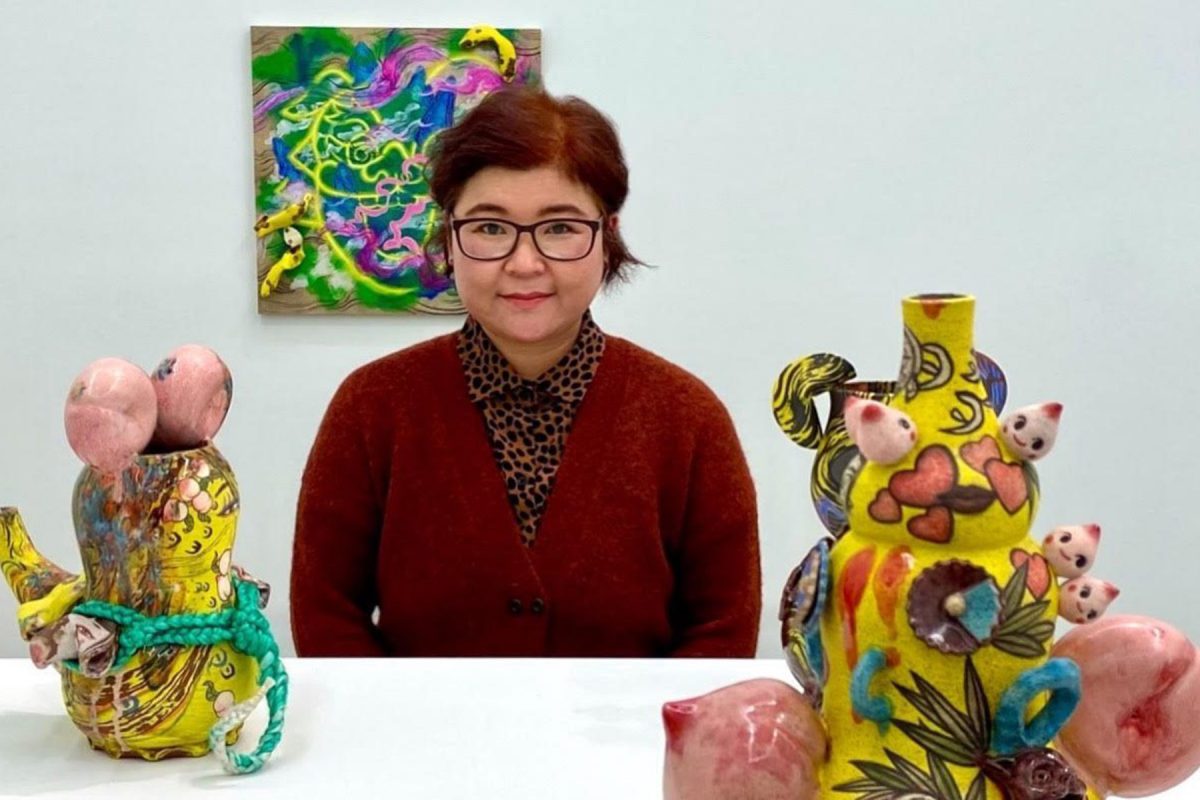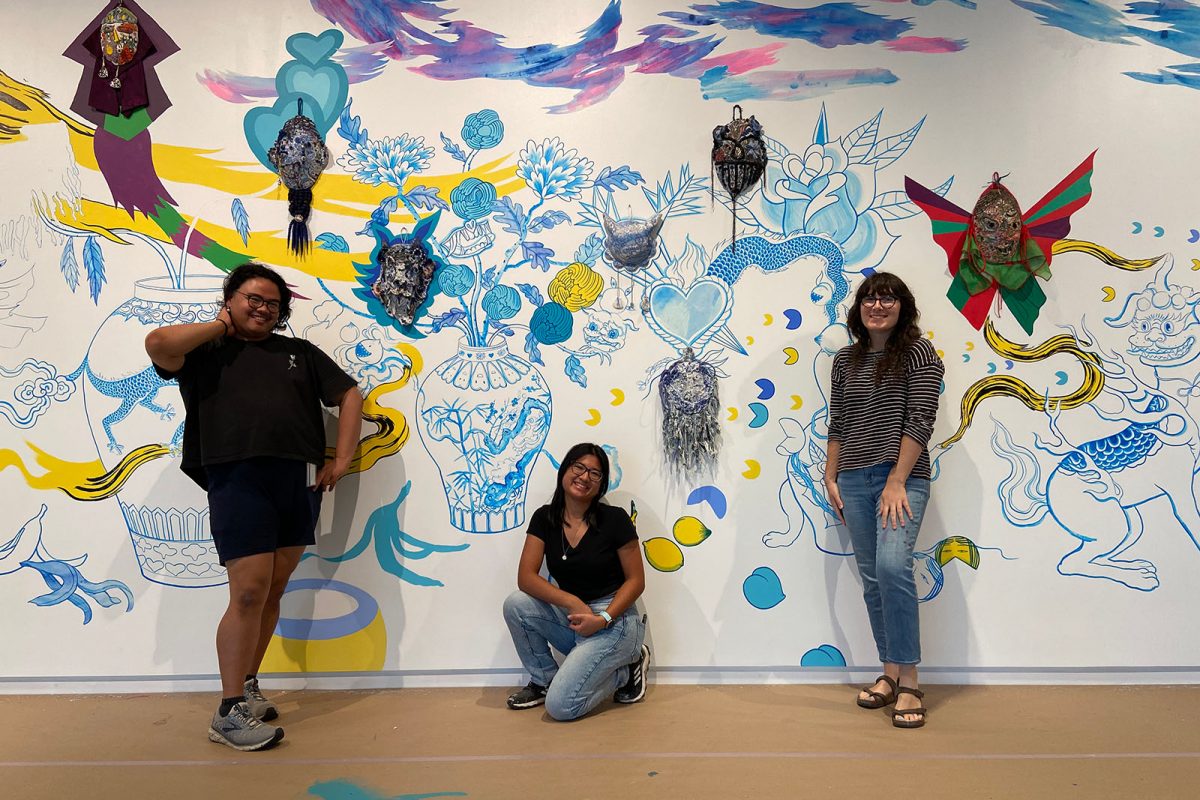
With the support of a First Year Assistant Professor grant from the Florida State University Office of Research, an art professor is transforming the educational experience for students by blending creative practice with hands-on research opportunities.
Jiha Moon, assistant professor at the Department of Art and Guggenheim Award recipient, illustrates this through her recent collaborative mural “One An Other,” which spans 29 feet by 13 feet at the University of Iowa. Moon and two of her graduate students, Ysabel Flores and Hannah Keats, took ten days to complete the project, providing invaluable hands-on experience for the students.
Moon is known for her colorful paintings and ceramic works that incorporate pop culture and mythology from her native Korea.
Tell us about your background and what inspired you to pursue a career in the arts.
I came from South Korea to pursue my second MFA at the University of Iowa. I have been teaching for over a decade, but I have been an artist my whole life. My main focus is painting and drawing, though I often collaborate with printmakers and work in ceramic media. My passion lies in visually communicating with the world through my craft. My subject matter often integrates Eastern and Western elements. I believe it is important to discuss our diverse cultural backgrounds and how we portray America in a globally recognized context.
What student learning opportunities have you helped facilitate at FSU?
Stanley Museum of Art of the University of Iowa reached out to me for a site-specific mural installation, which was a new and exciting challenge. This project was the largest and most up-to-date multimedia mural I had ever worked on. Over the summer, we worked intensively for 10 days on-site, collaborating with various groups, including museum staff, FSU MFA students and University of Iowa students.
FSU’s First Year Assistant Professor grant allowed us to cover our expenses and involve our students in this mural project. This experience was meant to reflect my studio practice, which is usually a solitary endeavor. Working on-site with people watching us was a nerve-wracking yet rewarding experience. We discussed what it means to be an artist and a student, and I learned a lot from this project.
If a student could take away one key lesson from your class, what would it be?
My teaching philosophy is not about providing a specific formula but empowering students to become confident decision-makers. While I can guide them through technical skills and practice, true decision-making is something they must develop on their own. The ability to make decisions confidently and take responsibility for those choices is crucial. For example, I once encouraged a student to choose between several options for a self-portrait project. Instead of selecting for her, I emphasized that all options had the potential for success and that the key was to commit to a decision and navigate any challenges that arose. This approach helps students understand that the process of making a decision and standing by it is more important than the outcome itself.
What are some effective ways to build connections with faculty?
Engaging with faculty at FSU is crucial for students, as these professors are valuable resources who have moved to Tallahassee to support their academic journeys. By exploring their work and building connections, students can significantly enhance their university experience. In addition, interacting with visiting artists offers unique learning opportunities and helps expand professional networks. Informal settings, like lunch and walks, are ideal for making meaningful connections, which can be beneficial both during studies and after graduation.
Students can create these connections by attending their lectures or studio visits with visiting artists to gain insights and build relationships. Engaging with people who have different perspectives can help us understand each other better and provide valuable feedback on our work. These connections are essential for growth and success, both academically and professionally.
Are you creating any new programs that will further enhance the learning experience at FSU?
We are currently working on a visiting artist program at FSU, and I am excited about the possibilities. One of our successful alumni, Zoë Charlton, will be coming as a visiting artist, which is a significant step forward in inspiring FSU students to realize the levels they can achieve during their time here.






